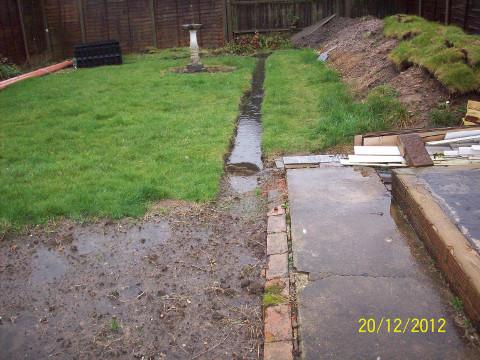This is my - completely full - soakway test trench. Most of the pipework is already in place, but I haven't buried the crates yet.
2012 has been a rather demanding year for handling/removing rainwater from the roof.
I have seen the water table in the back garden rise to the surface of the lawn twice - i.e. completely overwhelmed!
At the far end of the trench the water overflows and runs away into other gardens. Apparently, this surface water overflow has occurred previously, in extreme circumstances, before I dug my test trench. . . . so I don't feel quite so bad about it.
This new soakaway replaces a badly-placed, clogged and inadequate old soakaway on the high side of the house.
Also, the neighbour's house was feeding into that old soakaway, via a porous pipe, running across the front of my house about 1.5 metres from the front wall.
My ( recently-acquired ) house had severe penetrating damp on three sides before I dug out the clay against the walls, installed french-drains and reorganised the rainwater drainage.
Despite a very wet year the house is is much dryer inside.
It is a pity that the new soakaway in the back garden doesn't work as hoped and will need a surface overflow.



